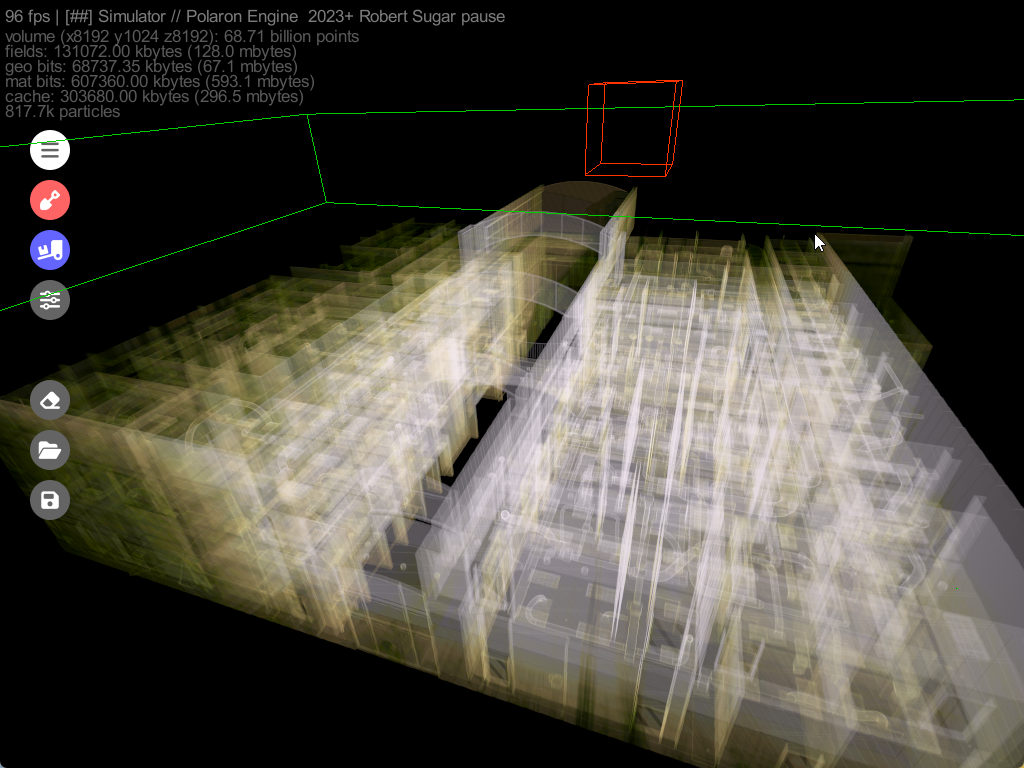We often get asked about the performance and capabilities of the engine. It’s rapidly advancing – so please don’t take this as gospel but we’ve recorded some KPIs and indicative data and examples for reference. You can find links to other technological capabilities and features below:
Polaron Technologies
Polaron by the numbers
Some quick key stats on how Polaron performs and some key indicators of it’s performance.
Minimum & Recommended Spec
This will likely be revised upwards for some of the commercial applications, whereas for gaming and historical simulation we want to ensure the biggest audience can enjoy these products.
CPU / GPU requirements
| Platform | Min Spec | Recommended Spec | Comment |
| Portable / Edge | Laptop – i7 / 3070ti | Laptop – i9 / 3090ti | Smaller scenes run acceptably Fewer agents / Ai on lower spec |
| Consumer PC | PC – i9 / 3090ti | PC – i9 / 4090ti | Smaller editable scenes on lower power devices |
| Nvidia Cloud | TBC | TBC | Not a problem – remains untested* |
RAM & Memory Requirements
Please note that due to the very high data volumes involved – Polaron really runs best on solid state memory and as fast a RAM array as is available in order to avoid bottlenecking the CPU / GPU.
| Component | Min Spec | Recommended Spec | Comment |
| SSD | 256GB | 500GB | As fast as you can go! |
| RAM | Solid state @robert-sugarurbanhawk-space | Solid state @robert-sugarurbanhawk-space | As fast as you can get! |
| Network connection | Wifi-6 | Ethernet | Lower latency leads to fewer issues and hosting of games / collaborative simulations |
How fast?
Typical frame rates from testing (i9 – 32GB RAM, 500GB SSD & Nvidia 3090Ti)
*Please note that these tend to get faster all the time! Please don’t treat these as gospel as it’s updated as frequently as we can. Performance enhancements come in a range of methods – therefore some are cumulative and others are reworks of pipelines to enhance efficiency.
We will release more finite benchmarks to track progress in Q1 2024.
| Platform | Min Frame rate | Typical Frame Rate | Max frame rates |
| Landscape engine (2.5 / 3D) | 35fps | 40-70fps | 140fps |
| Volume engine (3D) | 29fps | 45-70 fps | 140fps |
| Physics single thread (C++ / CPU) | 18-20fps | – | By slowing the physics in games we can “tick” over the sim and gameplay isn’t affected. For serious sims – FPS is at or closer to real-time or higher – depending on the application. |
| OSM Unpack – UK | 2 mins | 45s | |
| OSM Unpack – EU | 2hrs | 1hr 45 | |
| 200GB Lidar import | 2mins | 3mins | Depends on packing etc. Once saved as scene it’s an instant load. Can be real-time fed or chunked. |

